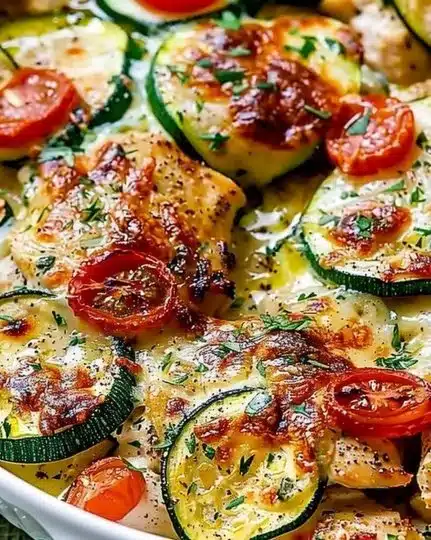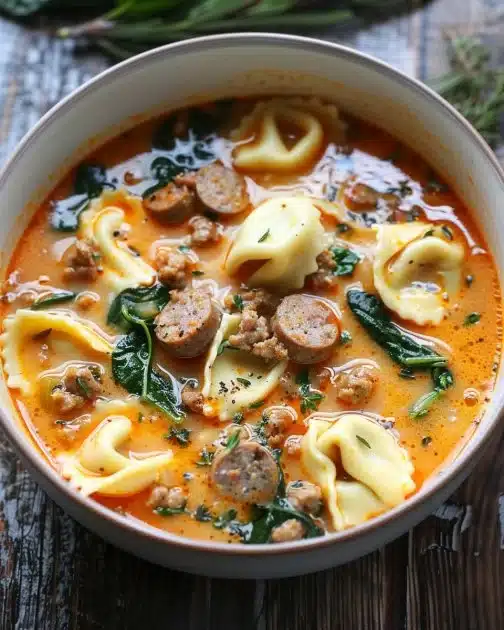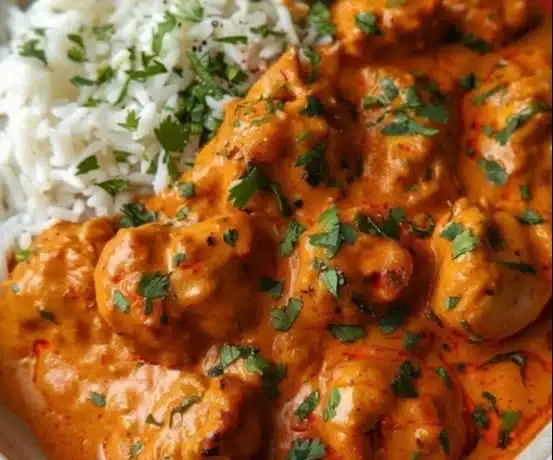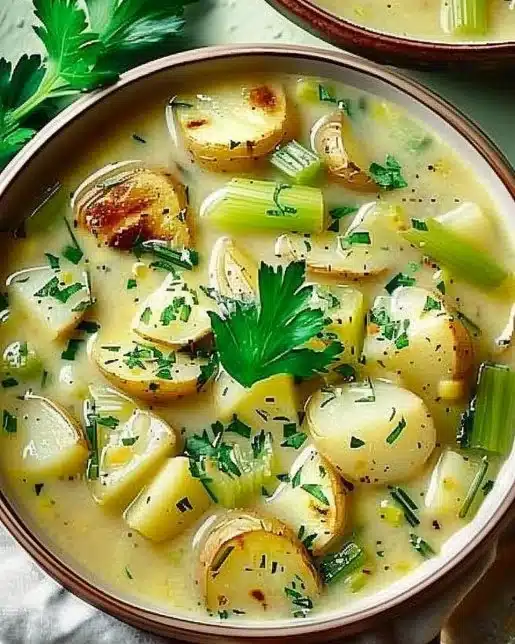The Ultimate Guide on How to Caramelize Onions
Caramelize Onions : if you’ve ever tasted perfectly caramelized onions, you know they can turn a simple dish into something extraordinary. Their deep, rich, and slightly sweet flavor makes them a versatile addition to countless recipes — from burgers and pizzas to soups and savory tarts. This ultimate guide will walk you through every detail: the science behind caramelization, choosing the right onions, and mastering the low-and-slow cooking method.
Table of Contents
Caramelizing onions is not just about cooking them until brown — it’s a precise process that transforms their natural sugars into layers of complex flavor. Understanding the science of caramelization can help you perfect your technique and avoid common pitfalls. If you want to dive deeper into the chemistry behind this transformation, check out the chemistry of caramelization.
Choosing the right onion variety also plays a role in flavor and texture. Sweet onions like Vidalia, Walla Walla, or Maui have higher sugar content, making them ideal for caramelizing. For more on onion varieties and their uses, visit the University of Illinois Extension – Onion Guide.
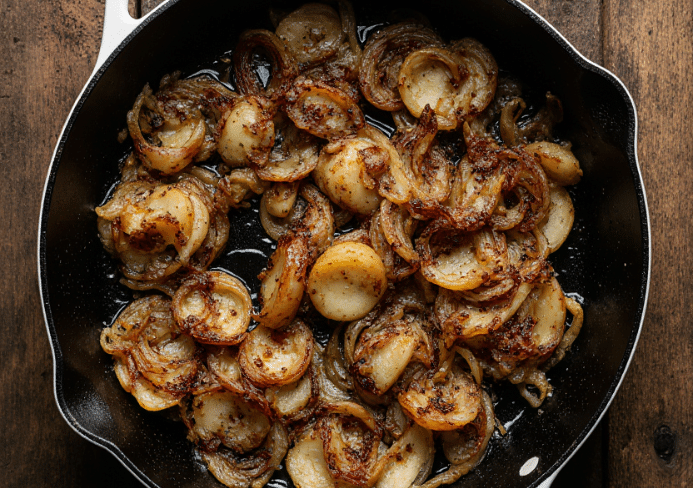
Understanding the Science Behind Caramelization
Caramelization is the process of breaking down sugars through heat, creating hundreds of new flavor compounds. In onions, this happens when their natural sugars are exposed to heat over time.
- Caramelization involves sugars only, while the Maillard reaction involves amino acids and sugars together
- Low and slow cooking allows flavors to develop without burning
- Water evaporation concentrates flavors and increases sweetness
Choosing the Best Onions for Caramelizing
Different onions produce different results when caramelized:
- Yellow onions – Balanced flavor; go-to choice for most dishes
- White onions – Sharper flavor; less sweet but still good for savory recipes
- Red onions – Milder; develop subtle sweetness and retain a hint of color
- Sweet onions – High sugar content; caramelize faster and sweeter
Pro tip: High-sugar onions caramelize more quickly but can also burn faster if heat is too high.
Essential Equipment & Tools
To achieve evenly caramelized onions, choose your tools wisely:
- Pan choice:
- Cast iron skillet for excellent heat retention
- Stainless steel sauté pan for even browning and easy deglazing
- Utensils: Wooden spoon or heatproof tongs for gentle stirring
- Size matters: Use a wide pan so onions cook in a single layer
Ingredients You’ll Need
Simple ingredients make the best caramelized onions:
- 2–3 large onions (yellow, white, red, or sweet)
- 3–4 tbsp olive oil, butter, or a combination
- A pinch of salt
- Optional: balsamic vinegar, red wine vinegar, or wine for deglazing
- Optional herbs: thyme, rosemary, or bay leaf for aroma
Step-by-Step Guide to Caramelizing Onions
Step 1: Prepare the Onions
- Peel onions and cut off root and stem ends
- Slice evenly into thin half-rings for consistent cooking
Step 2: Heat the Pan & Add Fat
- Set skillet over medium heat
- Add oil, butter, or both — start with oil to stabilize butter
Step 3: Add Onions & Season
- Add onions and sprinkle with salt
- Stir to coat evenly in fat
- Salt helps draw out moisture for faster browning
Step 4: Cook Low & Slow
- Reduce to medium-low once onions soften
- Stir every 5–10 minutes to avoid burning
- Allow sugars to develop over 45–60 minutes
Step 5: Deglaze
- If bits stick to the pan, add balsamic vinegar, wine, or stock
- Scrape gently to release flavorful browned bits
Step 6: Finish & Store
- Remove from heat when onions are deep golden-brown
- Store in airtight container in fridge for up to 4 days or freeze for longer
Variations on the Classic Method
- Garlic-infused: Add minced garlic in last 10 minutes
- Herb-seasoned: Toss in thyme or rosemary mid-cook
- Extra-sweet: Sprinkle a pinch of brown sugar for added sweetness
Common Mistakes to Avoid
- Using high heat: Burns onions before sugars develop
- Overcrowding the pan: Steams onions instead of browning
- Stirring constantly: Prevents proper browning
Alternative Cooking Methods
- Oven-roasted onions – Roast slices at 375°F until golden
- Slow cooker – Cook on low for 8–10 hours
- Instant Pot – Sauté first, then slow cook several hours
How to Store & Reheat Caramelized Onions
According to USDA food safety guidelines, proper storage prevents spoilage:
- Fridge: Airtight container for up to 4 days
- Freezer: Freezer-safe bags for up to 3 months
- Reheat: Use low heat to keep them moist
Delicious Ways to Use Caramelized Onions
- On burgers, grilled cheese, or flatbreads
- Mixed into pasta or risotto
- On top of pizzas with goat cheese
- In soups, such as French onion soup
- As a topping for roasted meats or vegetables
FAQs
Can you caramelize onions without oil or butter?
Yes, but they may dry out. Use water or broth to prevent burning.
How long do caramelized onions last?
Up to 4 days in the fridge, 3 months in the freezer.
How do you speed up caramelization without burning?
Use a pinch of baking soda to accelerate browning — watch closely.
Do onions get sweeter the longer you cook them?
Yes — the longer the cooking, the sweeter they become.
Conclusion & Final Tips
Caramelizing onions is an exercise in patience and precision. Use the right onions, keep the heat low, and let the natural sugars work their magic. Once you master this, you’ll have a flavor powerhouse ready to elevate almost any dish.
PrintThe Ultimate Guide on How to Caramelize Onions
- Total Time: 55 minutes
- Yield: About 1 cup 1x
- Diet: Vegetarian
Description
2–3 large onions (yellow, white, red, or sweet)
3–4 tablespoons olive oil, butter, or a combination of both
A pinch of salt
Optional: 1 tablespoon balsamic vinegar, red wine vinegar, or wine for deglazing
Optional herbs: thyme, rosemary, or bay leaf
Ingredients
Prepare the Onions:
Peel and cut off root and stem ends.
Slice evenly into thin half-rings for consistent cooking.
Heat the Pan & Add Fat:
Place a large skillet over medium heat.
Add oil, butter, or both — start with oil to stabilize butter.
Add Onions & Season:
Add onions to the pan and sprinkle with salt.
Stir to coat evenly in the fat.
Salt helps draw out moisture for faster browning.
Cook Low & Slow:
Once onions soften, reduce heat to medium-low.
Stir every 5–10 minutes to prevent burning.
Continue cooking for 45–60 minutes until deep golden-brown.
Deglaze (Optional):
If bits stick to the pan, add balsamic vinegar, wine, or stock.
Gently scrape to release flavorful browned bits.
Finish & Store:
Remove from heat when onions are soft and caramel-colored.
Store in an airtight container in the refrigerator for up to 4 days or freeze for up to 3 months.
Instructions
1. Prepare the Onions: – Peel and cut off root and stem ends. – Slice evenly into thin half-rings for consistent cooking. 2. Heat the Pan & Add Fat: – Place a large skillet over medium heat. – Add oil, butter, or both — start with oil to stabilize butter. 3. Add Onions & Season: – Add onions to the pan and sprinkle with salt. – Stir to coat evenly in the fat. – Salt helps draw out moisture for faster browning. 4. Cook Low & Slow: – Once onions soften, reduce heat to medium-low. – Stir every 5–10 minutes to prevent burning. – Continue cooking for 45–60 minutes until deep golden-brown. 5. Deglaze (Optional): – If bits stick to the pan, add balsamic vinegar, wine, or stock. – Gently scrape to release flavorful browned bits. 6. Finish & Store: – Remove from heat when onions are soft and caramel-colored. – Store in an airtight container in the refrigerator for up to 4 days or freeze for up to 3 months.
Notes
For extra flavor, add herbs during the last 15 minutes of cooking. Caramelized onions can be made in bulk and frozen in small portions.
- Prep Time: 5 minutes
- Cook Time: 50 minutes
- Category: Condiment
- Method: Stovetop
- Cuisine: Global
Nutrition
- Serving Size: 2 tablespoons
- Calories: 50
- Sugar: 3g
- Sodium: 35mg
- Fat: 3.5g
- Saturated Fat: 1.5g
- Unsaturated Fat: 2g
- Trans Fat: 0g
- Carbohydrates: 4g
- Fiber: 0g
- Protein: 0g
- Cholesterol: 5mg
Keywords: caramelized onions, slow cooked onions, onion topping, balsamic onions

